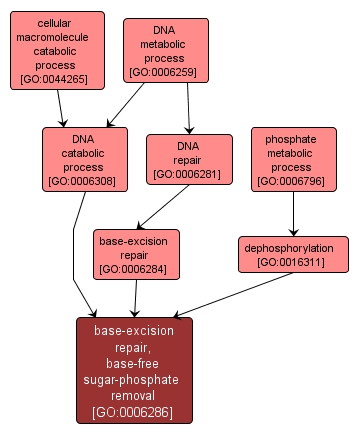GO TERM SUMMARY
|
| Name: |
base-excision repair, base-free sugar-phosphate removal |
| Acc: |
GO:0006286 |
| Aspect: |
Biological Process |
| Desc: |
Excision of the sugar phosphate residue at an AP site, i.e. a deoxyribose sugar with a missing base, by a phosphodiesterase enzyme. |
|

|
INTERACTIVE GO GRAPH
|














